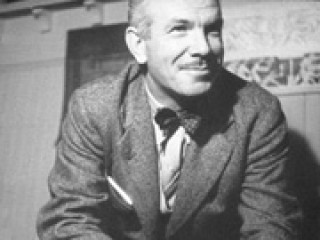
Norman Bethune biography
Date of birth : 1890-03-03
Date of death : 1939-11-12
Birthplace : Gravenhurst, Ontario, Canadian
Nationality : Canadian
Category : Science and Technology
Last modified : 2011-06-20
Credited as : Physician, medical innovator,
Henry Norman Bethune was born in Gravenhurst, Ontario, on March 3, 1890. His father was a Presbyterian minister who had descended from a long line of clergymen, educators, and medical practitioners. His mother had been an evangelical missionary. Bethune's early commitment to maintain the family tradition of service to the less fortunate remained throughout his life.
Bethune left medical school at the University of Toronto in 1914 to enlist in the Canadian army. Wounded in action in France in 1915, he went back to the university to complete his medical studies. After graduation he joined the Royal Navy and then the Canadian air force.
During the early 1920s, he pursued postgraduate studies in medicine in London and Edinburgh, where he was elected a Fellow of the Royal College of Surgeons in 1922. In 1924 he opened a private medical practice in Detroit, Michigan. Two years later his health broke down. Discovering that he had contracted tuberculosis in both lungs, he sought treatment at the famous Trudeau Sanatorium in Saranac Lake, New York. With his condition worsening, Bethune eventually persuaded his reluctant doctors to perform a potentially fatal operation. Its success and his amazingly rapid recovery inspired him to give up private practice and to join the medical search for a cure for the disease that had nearly taken his life.
In 1928 he became the first assistant of Dr. Edward Archibald, the Canadian pioneer in thoracic surgery at McGill University in Montreal, Quebec. Over the next eight years, Bethune's invention of numerous operating instruments, his writings in medical journals, and his daring surgical techniques raised him to prominence in the international medical community.
In the early 1930s, as the Depression deepened in Montreal, Bethune became more conscious of the relationship between social and economic conditions and the incidence of tuberculosis. Through his concern for the welfare of those who were unable to afford medical treatment he opened a free clinic. In 1935 he attended the International Physiological Congress in Moscow. His purpose was to examine the system of socialized medicine in operation in the U.S.S.R.
On his return to Canada he organized a campaign to promote the introduction of a state medical care system. His open and persistent advocacy of his views alienated him from many of his professional colleagues and also moved him closer to the left. In 1936 he joined the Communist Party.
Shortly after the outbreak of the Spanish Civil War he resigned his hospital position and offered his services to the Spanish Republican government. Following a tour of the front in November 1936 he set up a mobile blood-transfusion service to rush bottled blood in refrigerated trucks to the wounded at the front. The scheme, which was the first of its kind in history, saved many lives, but Bethune refused to accept military discipline. Because of this the Spanish authorities asked him to return to Canada in June 1937.
To raise money to expand the blood transfusion service, he went on a North American fund-raising tour. During the tour Japan began its full-scale invasion of China. Unable to return to Spain, unemployed, and alone, Bethune decided to go to China.
In January 1938 he made a perilous journey of more than 600 miles from Hong Kong to the headquarters of the Chinese Eighth Route Army in northwest China. In the rugged mountainous area west of Beijing he put together a medical field service. There he constructed makeshift hospitals throughout the region, wrote textbooks on elementary medicine and surgery, and began training young Chinese in rudimentary medical techniques.
On horseback he led his mobile medical unit through the barren Wu Tai mountains of Shanxi province and across the Hebei plains to inspect personnel, revamp hospitals, and treat the wounded. During much of the time Bethune's unit was behind Japanese lines. Frequently called to battles, he and his team would race to the scene to set up their operating theater, which was seldom more than three miles from the firing.
Long hours, inadequate food, and overwork had weakened him. His eyesight was failing, his teeth were in poor condition, and one ear had become deaf. On a final inspection tour before a planned return to Canada to receive medical treatment and to raise funds for his work, he was called to battle. During an operation he nicked his finger. There were no surgical gloves. Infection led quickly to blood poisoning. Just before dawn, on November 12, 1939, in a tiny peasant hut in the village of Huang Shikou in Heibei province, he died.
Bethune's death received little attention in Canada or in China until the Cultural Revolution (1966-1976). During that decade of social and political upheaval the Chinese Communist leadership used Bethune as a symbol of selflessness, dedication, and responsibility—characteristics that they wanted the Chinese people to adopt. They published hundreds of millions of copies of an essay written by Mao Zedong called In Memory of Norman Bethune. Everyone was expected to read it, and many committed it to memory. Since the 1960s through books, movies, and study in the schools, Bethune has become a national hero in China.
In Canada, belated recognition was granted in 1972 when the federal government declared him "a Canadian of national historical significance." The Presbyterian manse in which he was born was restored to period and a portion of it converted into a museum. It was opened in 1976 as the Bethune Memorial Home.
















